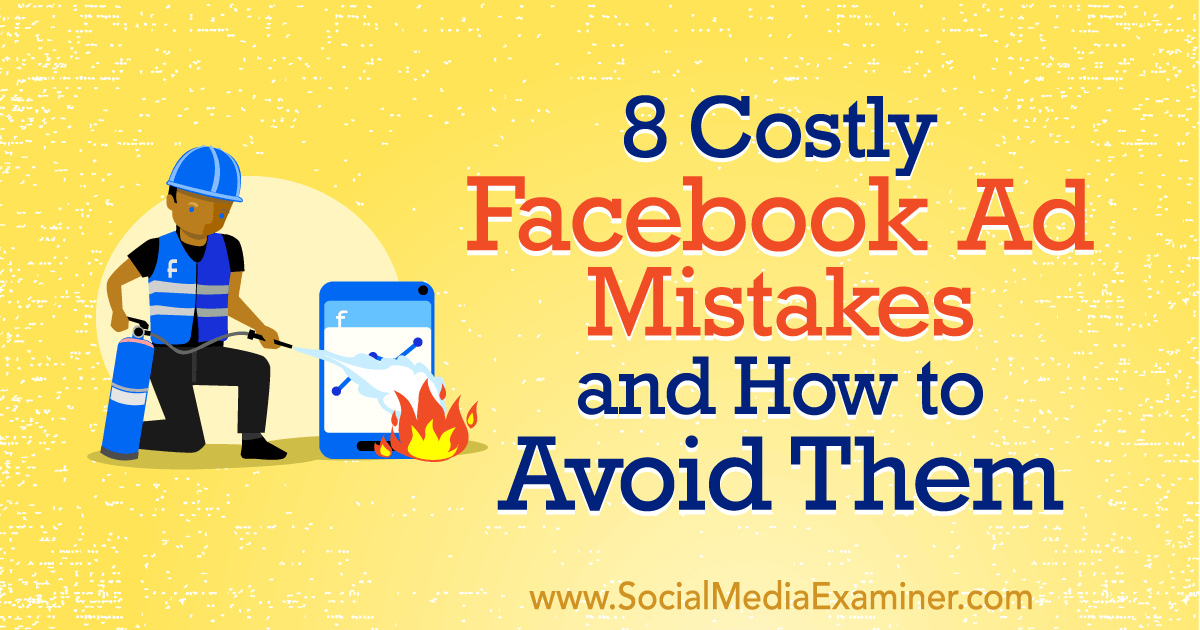Posted by BritneyMuller
It's finally here, for your review and feedback: Chapter 7 of the new Beginner's Guide to SEO, the last chapter. We cap off the guide with advice on how to measure, prioritize, and execute on your SEO. And if you missed them, check out the drafts of our outline, Chapter One, Chapter Two, Chapter Three, Chapter Four, Chapter Five, and Chapter Six for your reading pleasure. As always, let us know what you think of Chapter 7 in the comments!
Set yourself up for success.
They say if you can measure something, you can improve it.
In SEO, it’s no different. Professional SEOs track everything from rankings and conversions to lost links and more to help prove the value of SEO. Measuring the impact of your work and ongoing refinement is critical to your SEO success, client retention, and perceived value.
It also helps you pivot your priorities when something isn’t working.
Start with the end in mind
While it’s common to have multiple goals (both macro and micro), establishing one specific primary end goal is essential.
The only way to know what a website’s primary end goal should be is to have a strong understanding of the website’s goals and/or client needs. Good client questions are not only helpful in strategically directing your efforts, but they also show that you care.
Client question examples:
- Can you give us a brief history of your company?
- What is the monetary value of a newly qualified lead?
- What are your most profitable services/products (in order)?
Keep the following tips in mind while establishing a website’s primary goal, additional goals, and benchmarks:
Goal setting tips
- Measurable: If you can’t measure it, you can’t improve it.
- Be specific: Don’t let vague industry marketing jargon water down your goals.
- Share your goals: Studies have shown that writing down and sharing your goals with others boosts your chances of achieving them.
Measuring
Now that you’ve set your primary goal, evaluate which additional metrics could help support your site in reaching its end goal. Measuring additional (applicable) benchmarks can help you keep a better pulse on current site health and progress.
Engagement metrics
How are people behaving once they reach your site? That’s the question that engagement metrics seek to answer. Some of the most popular metrics for measuring how people engage with your content include:
Conversion rate - The number of conversions (for a single desired action/goal) divided by the number of unique visits. A conversion rate can be applied to anything, from an email signup to a purchase to account creation. Knowing your conversion rate can help you gauge the return on investment (ROI) your website traffic might deliver.
In Google Analytics, you can set up goals to measure how well your site accomplishes its objectives. If your objective for a page is a form fill, you can set that up as a goal. When site visitors accomplish the task, you’ll be able to see it in your reports.
Time on page - How long did people spend on your page? If you have a 2,000-word blog post that visitors are only spending an average of 10 seconds on, the chances are slim that this content is being consumed (unless they’re a mega-speed reader). However, if a URL has a low time on page, that’s not necessarily bad either. Consider the intent of the page. For example, it’s normal for “Contact Us” pages to have a low average time on page.
Pages per visit - Was the goal of your page to keep readers engaged and take them to a next step? If so, then pages per visit can be a valuable engagement metric. If the goal of your page is independent of other pages on your site (ex: visitor came, got what they needed, then left), then low pages per visit are okay.
Bounce rate - “Bounced” sessions indicate that a searcher visited the page and left without browsing your site any further. Many people try to lower this metric because they believe it’s tied to website quality, but it actually tells us very little about a user’s experience. We’ve seen cases of bounce rate spiking for redesigned restaurant websites that are doing better than ever. Further investigation discovered that people were simply coming to find business hours, menus, or an address, then bouncing with the intention of visiting the restaurant in person. A better metric to gauge page/site quality is scroll depth.
Scroll depth - This measures how far visitors scroll down individual webpages. Are visitors reaching your important content? If not, test different ways of providing the most important content higher up on your page, such as multimedia, contact forms, and so on. Also consider the quality of your content. Are you omitting needless words? Is it enticing for the visitor to continue down the page? Scroll depth tracking can be set up in your Google Analytics.
Search traffic
Ranking is a valuable SEO metric, but measuring your site’s organic performance can’t stop there. The goal of showing up in search is to be chosen by searchers as the answer to their query. If you’re ranking but not getting any traffic, you have a problem.
But how do you even determine how much traffic your site is getting from search? One of the most precise ways to do this is with Google Analytics.
Using Google Analytics to uncover traffic insights
Google Analytics (GA) is bursting at the seams with data — so much so that it can be overwhelming if you don’t know where to look. This is not an exhaustive list, but rather a general guide to some of the traffic data you can glean from this free tool.
Isolate organic traffic - GA allows you to view traffic to your site by channel. This will mitigate any scares caused by changes to another channel (ex: total traffic dropped because a paid campaign was halted, but organic traffic remained steady).
Traffic to your site over time - GA allows you to view total sessions/users/pageviews to your site over a specified date range, as well as compare two separate ranges.
How many visits a particular page has received - Site Content reports in GA are great for evaluating the performance of a particular page — for example, how many unique visitors it received within a given date range.
Traffic from a specified campaign - You can use UTM (urchin tracking module) codes for better attribution. Designate the source, medium, and campaign, then append the codes to the end of your URLs. When people start clicking on your UTM-code links, that data will start to populate in GA’s “campaigns” report.
Click-through rate (CTR) - Your CTR from search results to a particular page (meaning the percent of people that clicked your page from search results) can provide insights on how well you’ve optimized your page title and meta description. You can find this data in Google Search Console, a free Google tool.
In addition, Google Tag Manager is a free tool that allows you to manage and deploy tracking pixels to your website without having to modify the code. This makes it much easier to track specific triggers or activity on a website.
Additional common SEO metrics
- Domain Authority & Page Authority (DA/PA) - Moz’s proprietary authority metrics provide powerful insights at a glance and are best used as benchmarks relative to your competitors’ Domain Authority and Page Authority.
- Keyword rankings - A website’s ranking position for desired keywords. This should also include SERP feature data, like featured snippets and People Also Ask boxes that you’re ranking for. Try to avoid vanity metrics, such as rankings for competitive keywords that are desirable but often too vague and don’t convert as well as longer-tail keywords.
- Number of backlinks - Total number of links pointing to your website or the number of unique linking root domains (meaning one per unique website, as websites often link out to other websites multiple times). While these are both common link metrics, we encourage you to look more closely at the quality of backlinks and linking root domains your site has.
How to track these metrics
There are lots of different tools available for keeping track of your site’s position in SERPs, site crawl health, SERP features, and link metrics, such as Moz Pro and STAT.
The Moz and STAT APIs (among other tools) can also be pulled into Google Sheets or other customizable dashboard platforms for clients and quick at-a-glance SEO check-ins. This also allows you to provide more refined views of only the metrics you care about.
Dashboard tools like Data Studio, Tableau, and PowerBI can also help to create interactive data visualizations.
Evaluating a site’s health with an SEO website audit
By having an understanding of certain aspects of your website — its current position in search, how searchers are interacting with it, how it’s performing, the quality of its content, its overall structure, and so on — you’ll be able to better uncover SEO opportunities. Leveraging the search engines’ own tools can help surface those opportunities, as well as potential issues:
- Google Search Console - If you haven’t already, sign up for a free Google Search Console (GSC) account and verify your website(s). GSC is full of actionable reports you can use to detect website errors, opportunities, and user engagement.
- Bing Webmaster Tools - Bing Webmaster Tools has similar functionality to GSC. Among other things, it shows you how your site is performing in Bing and opportunities for improvement.
- Lighthouse Audit - Google’s automated tool for measuring a website’s performance, accessibility, progressive web apps, and more. This data improves your understanding of how a website is performing. Gain specific speed and accessibility insights for a website here.
- PageSpeed Insights - Provides website performance insights using Lighthouse and Chrome User Experience Report data from real user measurement (RUM) when available.
- Structured Data Testing Tool - Validates that a website is using schema markup (structured data) properly.
- Mobile-Friendly Test - Evaluates how easily a user can navigate your website on a mobile device.
- Web.dev - Surfaces website improvement insights using Lighthouse and provides the ability to track progress over time.
- Tools for web devs and SEOs - Google often provides new tools for web developers and SEOs alike, so keep an eye on any new releases here.
While we don’t have room to cover every SEO audit check you should perform in this guide, we do offer an in-depth Technical SEO Site Audit course for more info. When auditing your site, keep the following in mind:
Crawlability: Are your primary web pages crawlable by search engines, or are you accidentally blocking Googlebot or Bingbot via your robots.txt file? Does the website have an accurate sitemap.xml file in place to help direct crawlers to your primary pages?
Indexed pages: Can your primary pages be found using Google? Doing a site:yoursite.com OR site:yoursite.com/specific-page check in Google can help answer this question. If you notice some are missing, check to make sure a meta robots=noindex tag isn’t excluding pages that should be indexed and found in search results.
Check page titles & meta descriptions: Do your titles and meta descriptions do a good job of summarizing the content of each page? How are their CTRs in search results, according to Google Search Console? Are they written in a way that entices searchers to click your result over the other ranking URLs? Which pages could be improved? Site-wide crawls are essential for discovering on-page and technical SEO opportunities.
Page speed: How does your website perform on mobile devices and in Lighthouse? Which images could be compressed to improve load time?
Content quality: How well does the current content of the website meet the target market’s needs? Is the content 10X better than other ranking websites’ content? If not, what could you do better? Think about things like richer content, multimedia, PDFs, guides, audio content, and more.
|
Pro tip: Website pruning!
Removing thin, old, low-quality, or rarely visited pages from your site can help improve your website’s perceived quality. Performing a content audit will help you discover these pruning opportunities. Three primary ways to prune pages include:
- Delete the page (4XX): Use when a page adds no value (ex: traffic, links) and/or is outdated.
- Redirect (3XX): Redirect the URLs of pages you’re pruning when you want to preserve the value they add to your site, such as inbound links to that old URL.
- NoIndex: Use this when you want the page to remain on your site but be removed from the index.
|
Keyword research and competitive website analysis (performing audits on your competitors’ websites) can also provide rich insights on opportunities for your own website.
For example:
- Which keywords are competitors ranking on page 1 for, but your website isn’t?
- Which keywords is your website ranking on page 1 for that also have a featured snippet? You might be able to provide better content and take over that snippet.
- Which websites link to more than one of your competitors, but not to your website?
Discovering website content and performance opportunities will help devise a more data-driven SEO plan of attack! Keep an ongoing list in order to prioritize your tasks effectively.
Prioritizing your SEO fixes
In order to prioritize SEO fixes effectively, it’s essential to first have specific, agreed-upon goals established between you and your client.
While there are a million different ways you could prioritize SEO, we suggest you rank them in terms of importance and urgency. Which fixes could provide the most ROI for a website and help support your agreed-upon goals?
Stephen Covey, author of The 7 Habits of Highly Effective People, developed a handy time management grid that can ease the burden of prioritization:

Source: Stephen Covey,
The 7 Habits of Highly Effective People
Putting out small, urgent SEO fires might feel most effective in the short term, but this often leads to neglecting non-urgent important fixes. The not urgent & important items are ultimately what often move the needle for a website’s SEO. Don’t put these off.

SEO planning & execution
“Without strategy, execution is aimless. Without execution, strategy is useless.”
- Morris Chang
Much of your success depends on effectively mapping out and scheduling your SEO tasks. You can use free tools like Google Sheets to plan out your SEO execution (we have a free template here), but you can use whatever method works best for you. Some people prefer to schedule out their SEO tasks in their Google Calendar, in a kanban or scrum board, or in a daily planner.
Use what works for you and stick to it.
Measuring your progress along the way via the metrics mentioned above will help you monitor your effectiveness and allow you to pivot your SEO efforts when something isn’t working. Say, for example, you changed a primary page’s title and meta description, only to notice that the CTR for that page decreased. Perhaps you changed it to something too vague or strayed too far from the on-page topic — it might be good to try a different approach. Keeping an eye on drops in rankings, CTRs, organic traffic, and conversions can help you manage hiccups like this early, before they become a bigger problem.
Communication is essential for SEO client longevity
Many SEO fixes are implemented without being noticeable to a client (or user). This is why it’s essential to employ good communication skills around your SEO plan, the time frame in which you’re working, and your benchmark metrics, as well as frequent check-ins and reports.
Sign up for The Moz Top 10, a semimonthly mailer updating you on the top ten hottest pieces of SEO news, tips, and rad links uncovered by the Moz team. Think of it as your exclusive digest of stuff you don't have time to hunt down but want to read!
https://ift.tt/2UeXmrh


 1. Deloitte Digital, Alicia Hatch
1. Deloitte Digital, Alicia Hatch
 2. VMware, Robin Matlock
2. VMware, Robin Matlock
 3. Twitter, Leslie Berland
3. Twitter, Leslie Berland

 thanks to
thanks to 


 4. SoFi, Joanne Bradford
4. SoFi, Joanne Bradford


